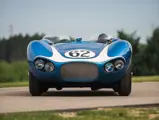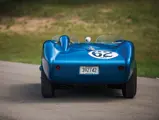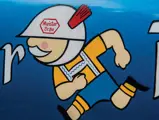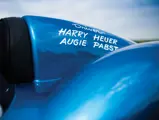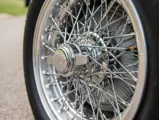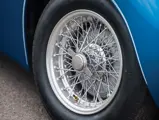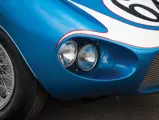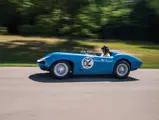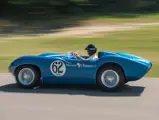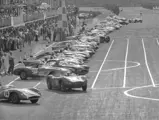
1959 Bocar XP-5 "Meister Bräuser III"
{{lr.item.text}}
$412,500 USD | Sold
{{bidding.lot.reserveStatusFormatted}}
- Raced by future SCCA champions Augie Pabst and Harry Heuer
- Car #2 of the Meister Bräuser team’s inaugural 1959 season
- Brilliant design and advanced fiberglass coachwork by Bob Carnes
- One of approximately 15 examples built
- Single ownership for 44 years
- Expertly restored to concours standards in 2014
- Awarded at the 2015 Amelia Island Concours d’Elegance
- Ideally prepared for both concours presentation and numerous driving events, including vintage racing
Est. 315 bhp, 283 cu. in. OHV Chevrolet Corvette V-8 engine with Rochester fuel injection; Borg-Warner four-speed manual transmission; Corvette posi-traction rear-end; chromoly steel tubular space frame with clamshell glass-reinforced polyester body; independent front suspension with dual trailing arms, torsion bars, and shock absorbers; live-axle rear suspension with trailing arms, torsion bars, and shock absorbers; and four-wheel Buick drum brakes. Wheelbase: 91 in.
THE BOCAR STORY
The American post-war road-racing scene brimmed with ingenious and industrious young men keen on capitalizing on an ever-ready supply of powerful Detroit mills and newfound innovations in fiberglass body molding. One such man was Bob Carnes of Denver, Colorado, an aeronautic engineer by trade who took up sports car racing in 1953, starting with a Glöckler-built Porsche Spyder. After switching to a Jaguar XK 120, which he later hot-rodded with a Cadillac V-8, Carnes eventually came to the conclusion that he would only be satisfied with a car of his own design.
In 1958, combining his first and last names, Carnes founded BOCAR and entered a market inhabited by builders like Devin and Kellison, following Cunningham and Allard, who were offering sports cars featuring American horsepower with lightweight European-inspired chassis and coachwork. After building only a handful of cars with names ranging from XP-1 through XP-4, Carnes introduced the Bocar XP-5 in early 1959.
Like the prior Bocars, the XP-5 featured a unique space-frame design constructed with high-strength chromoly steel with a torsion-bar suspension borrowed from a Porsche 356 and utilizing Buick drum brakes. A 283-cubic inch Corvette V-8 was mounted far behind the front axle, resulting in a desirable front–rear weight distribution ratio of 44:56 (with even more weight transferring to the rear axle during hard acceleration). Impressively, the engine was also laterally offset slightly toward the passenger’s side to counterbalance the weight of the driver for improved handling during racing. To crown these innovations, the XP-5’s ingeniously devised chassis was mounted with a sensuous lightweight fiberglass roadster body characterized by a purposeful, aerodynamic nose flowing into a pontoon-fender tail. In a further nod to style, the XP-5 was also available with optional Borrani wire wheels.
The writers of Sports Car Illustrated were beside themselves during extended testing at Riverside, generously pronouncing the XP-5 to be capable of a projected top speed of 150 mph. Regardless of the exact number, it was clear that in a proper state of race tune, the XP-5 could be competitive, and it certainly had a stylish appearance worthy of the day’s sports racers. Later, however, the limitations of the Corvette 283 engine were increasingly apparent in an ever-evolving field, which notably refined the concept into its arguably ultimate form with the introduction of the Shelby Cobra, and it was perhaps a sign of providence when a fire destroyed Carnes’ fabrication shop in 1962. Though he claimed to have built 30 Bocars during 1959, historians estimate that no more than 15 examples of the XP-5 were produced in total, and the model remains respected today as one of the quintessential examples of the limited-production American road racer.
THE MEISTER BRÄUSER III
Famous for its Meister Bräu beer, the Chicago-based Peter Hand Brewing Co. was founded in 1891 and by the mid-1950s had passed to its founder’s grandson, Harry Heuer. Heuer’s son, Harry Heuer Jr., was an avid racing enthusiast who was intrigued by the advent of corporate sponsorship and was tantalized by the possibilities that his family connections might facilitate. After convincing his father of the potential publicity dividends that Peter Hand might enjoy by sponsoring a racing team, the younger Heuer purchased the Bocar offered here to start his nascent scuderia Meister Bräu.
In August 1958, the Peter Hand Brewing Co. announced that it had acquired a new Scarab to compete in 1959 SCCA and USAC events under the Meister Bräuser banner. The successful racer, originally commissioned and campaigned by Lance Reventlow, would be backed up by the Bocar XP-5, christened Meister Bräuser III, making for a potent 1-2 combination.
On 31 May 1959, the XP-5 debuted at the USAC event at the 1st Annual Meadowdale 505 Race with Harry Heuer Jr. at the wheel, and he promisingly finished in 13th place. Mechanical issues prompted the car’s cancellation at its next two scheduled races, during which time Heuer hired a rising young driver named Augie Pabst. Pabst would soon make a name for himself by winning the 1959 USAC championship, as well as the 1960 SCCA championship with Meister Bräuser (the first of four SCCA championships the team won through 1963). With Pabst driving the Scarab and Heuer driving the XP-5, the 1959 Meister Bräuser team appeared to have a very promising future.
On 27 September at Vaca Valley, Heuer placed 17th in the Bocar, but the car did not qualify at the Riverside 200 Mile race two weeks later. On 18 October, the XP-5 enjoyed its best finish when Pabst narrowly lost the lead and finished second at the SCCA Regional at Road America. The Bocar was then shipped to the Bahamas for competition in the Bahamas Speed Week in early December. Ultimately, the Meister Bräuser team suffered from a host of logistical and mechanical difficulties, with all three of its cars (now including a second, more recently acquired Scarab) experiencing problems. Among other issues, the Bocar broke its axle during practice, and replacement parts did not arrive until the day before the week’s biggest event, the Nassau Trophy race.
Because Pabst’s Scarab had been damaged during a shipping incident in Georgia, he assumed driving duties for the Bocar during the Trophy Race, and he actually leapt out to 1st place through the first turns of lap one. Moments later, the XP-5’s fuel injectors clogged, and the car fell to the back of the pack by the lap’s conclusion. Despite the promising start, a bad clutch ultimately forced the Bocar’s retirement after just three laps.
Following the 1959 season, the Meister Bräuser team upgraded its stable to remain competitive, and this car was soon displayed with the Scarabs in January at the 1960 Chicago Auto Show, purportedly the first American sports racing cars ever exhibited at the event. Shortly thereafter, the XP-5 was acquired by Gordon Mertens who, in 1970, sold the rare race car to Worth Hill, a racing enthusiast who retained possession for over 40 years. The XP-5 was stored in a dry climate-controlled garage, and it remained in well-preserved condition when Mr. Hill finally offered the car for sale in April 2014.
Purchased then by the consignor, a discerning Bocar collector from Plymouth, Minnesota, the XP-5 has since been treated to a comprehensive, yet sympathetic restoration that included a full mechanical rebuild of the original drivetrain elements and a cosmetic renewal of the Meister Bräuser III livery, resplendent now—as before—with the hand-painted accents matching the iconic look of its Scarab teammates, including the striking Borrani wire wheels, as equipped from new. Following completion of the exacting refurbishment, the car was shown only once, winning an Amelia Award for “Pre-1959 Race Cars” at the 2015 Amelia Island Concours d’Elegance.
Driven by the legendary Augie Pabst and Harry Heuer for the future four-time SCCA Championship Meister Bräuser team, this beautifully restored American road-racing special is accompanied by period articles and photographs, advertisements, spec sheets, and pictures of the restoration process. It would make a fascinating complement to virtually any concours field, as well as a wonderful road tour or rally entrant (the Bocar can be road-registered on its Minnesota title), and it would likely be competitive at historic racing events like the Monterey Motorsports Reunion, where it will be sure to turn heads with its unique appearance, rarity, and special history.















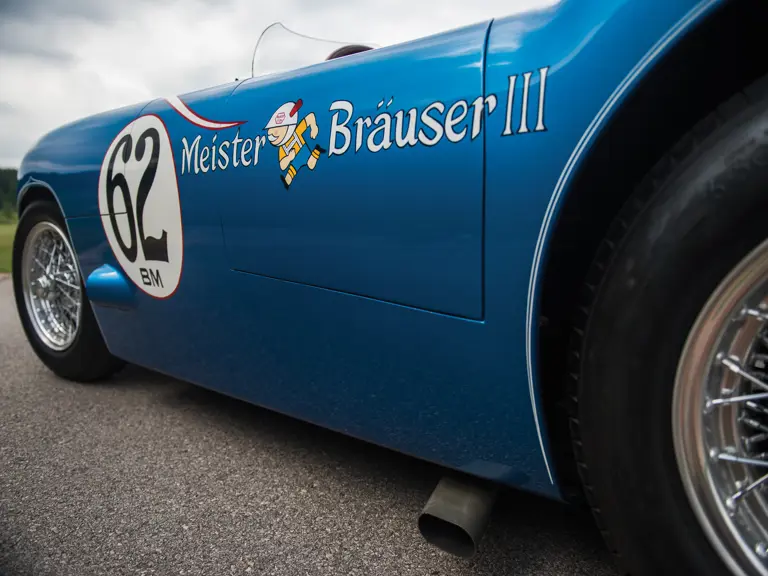


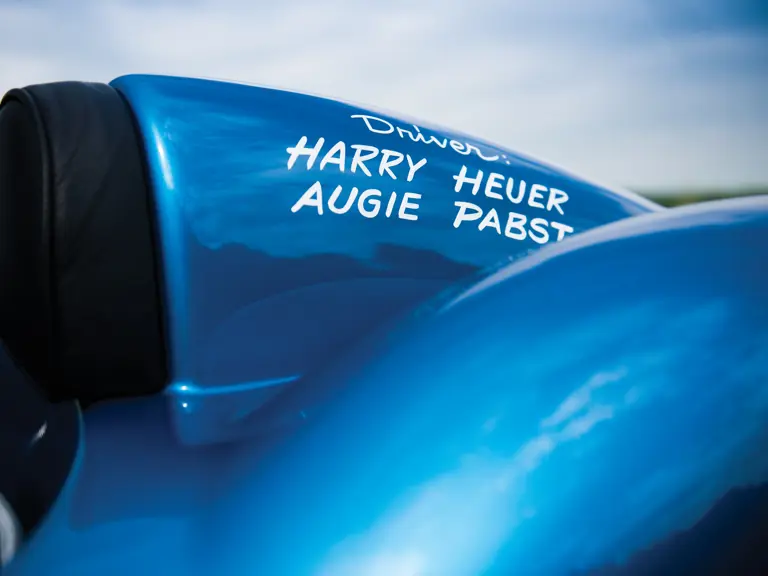





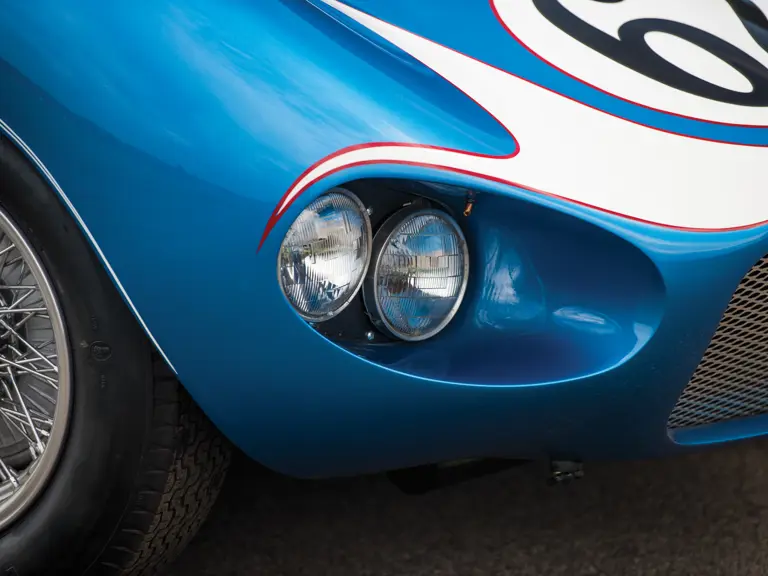




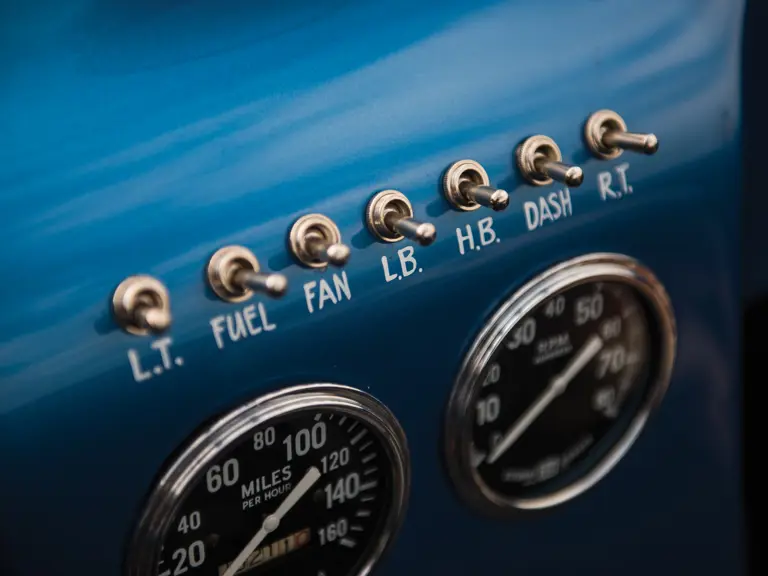












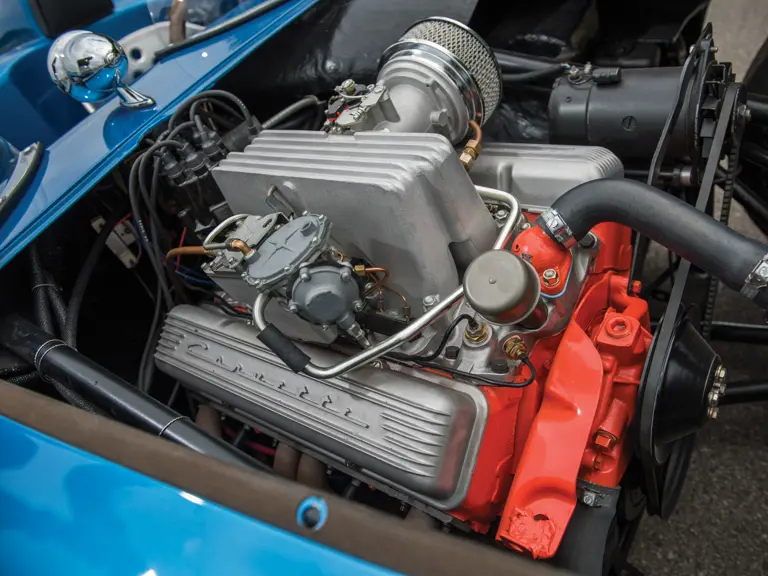













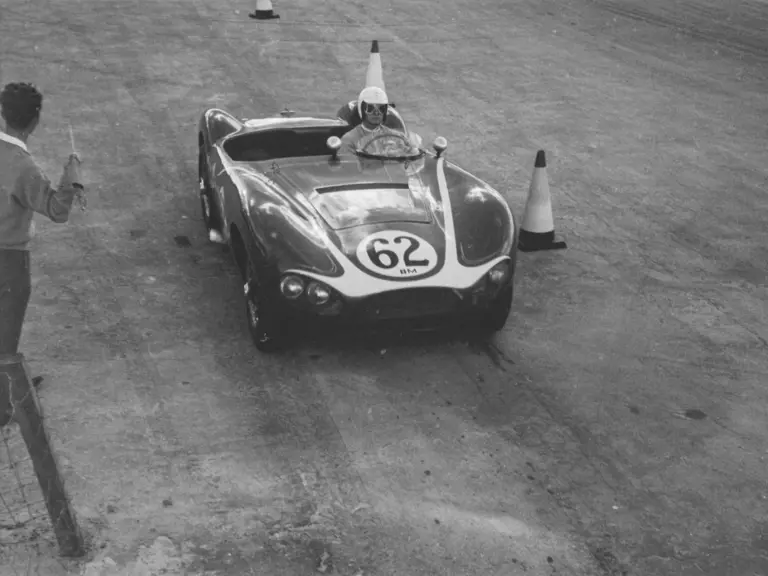


 | Monterey, California
| Monterey, California




